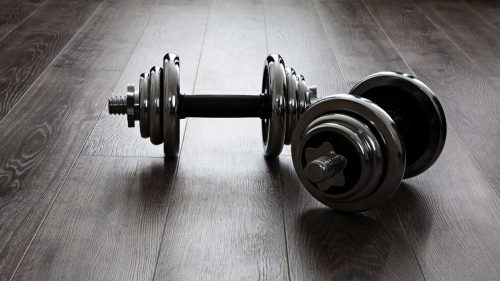

By Brandyn Parker
Having been a personal trainer for some time, I have encountered many individuals who are of the mind that getting in good shape is an overnight accomplishment. While most people are keenly aware of the physical labor involved in securing a healthy physical constitution, there are indeed some outliers who are somewhat ignorant of the process—and I stress the word process. As much as we would like to believe being in shape and healthy is as simple as purchasing a six week session with a trainer and trudging through the scheduled routine, reality suggests that that, unfortunately, is not the case.
Like cultivating a crop, raising a child, or attaining a college degree, there is no one quick route to the destination, but rather a collective effort from a wide range of sources that come together to build a formidable vehicle that has a purpose of nothing more than navigating to that highly coveted destination. And if you just happen to be seeking those specific sources, look no further. Listed below are the three major activities to incorporate in order to shred that troublesome fat and build a tad bit more confidence—and maybe a little muscle while you’re at it.

With my regulars after a cardiovascular circuit at Planet Fitness, a gym ideal for beginners.
#1) Healthy Eating Habits
Now, when I say healthy eating habits I don’t necessarily mean engorging yourself with endless amounts of fruits, vegetables, and salads, but rather incorporating whole and natural foods in your diet as well as monitoring your caloric intake and macro-nutrients (protein, fats, carbs, etc.). I encounter countless individuals who respond to my dietary interrogations with lists of so called healthy meals that they eat, but the moment I ask them about their calorie tracking regime, they act as though I’m speaking a different language. What some people don’t understand, no matter how hard I beat it into their head is—it’s not necessarily what you’re eating that will cause you to lose weight, but how much of it you’re eating.
You could be a die-hard vegan who regularly eats nothing but Boca burgers and tofu, but if you are far exceeding the amount of calories your body needs to maintain its equilibrium, then I’m sorry to say, those extra calories will equate to fat stored in select areas of your body. Although what you’re eating is just as important as how much of it you’re eating, many people forget that they need to be at a slight caloric deficit, as well ingesting the essential macro-nutrients necessary, in order to truly see any progress. Conversely, one thing you don’t want to do is under-eat. Those who think undereating is the best solution will undoubtedly binge at some point and over-compensate for the nutrients they may have been lacking throughout their fasting days. Ideally, you want to be at a moderate deficit, of no more than 500 calories under whatever amount your BMI (Body Mass Index) demands.

#2) Resistance training
The idea of lifting weights may scare off many women, as the idea of growing muscle to the point where they start to resemble pro fighter Brock Lesner is undoubtedly disheartening. Before you ladies worry too much, however, you should understand that the body composition of men and women are vastly different. Temporarily assuming the role as health teacher, I’m going to share the knowledge that women generally house large amounts of estrogen while men produce an entirely different chemical we know of as testosterone. Men and women both do indeed produce both substances, but—depending on the gender—the difference is decidedly lopsided. Because females don’t produce as much testosterone (the stuff that gives men facial hair and makes us muscular) as men, women don’t have to worry about getting “bulky and unfeminine” due to the fact that you simply don’t have the software that programs your body to do such a thing—and unless you’re devouring 10,000 calories worth of food a day, it simply won’t happen.
When it comes to losing weight, resistance training is essential due to the fact that—on average—our bodies receive a 36 hour metabolism boost after every good workout. This metabolism boost will in turn cause your body to use calories to digest food more efficiently. This equates to burning calories even during your sedentary states, like while you’re watching your irresistible television shows or even reading Classic Chicago’s wonderful articles. Body-weight exercises like pushups, squats, and pull ups, as well as machines, free weights and resistance cables will all suffice as viable methods of resistance training, and should be implemented just as much as a meticulous diet and your daily cardio exercises.

#3) Cardio
Speaking of cardio, I bet you’re probably assuming I will go into explicit detail as to how this is the best method to lose weight. I wouldn’t be wrong to say such a thing, especially when considering the fact that cardio is directly intended to burn calories—which directly correlates with weight loss. But before you consider spending those long, tedious hours on the treadmill you should know that more cardio doesn’t necessarily translate into having a more fit body, but rather a smaller one.
When doing excessive cardio, you burn calories—and therefore fat, yes—but you also burn muscle. Too much cardio and not enough resistance training to tone your body might cause you to lose weight too quickly, and the impatient stomps on the treadmill may induce the feeling of becoming a smaller and not necessarily better version of yourself. Also, I have heard many horror stories about the ‘loose skin’ epidemic that plagues many a people who lose weight too soon. So before you get gung ho about undertaking your impending weight loss endeavors, keep in mind that all three of the latter ingredients need to come together and converge over a long period of time in order for you to receive genuine results.







